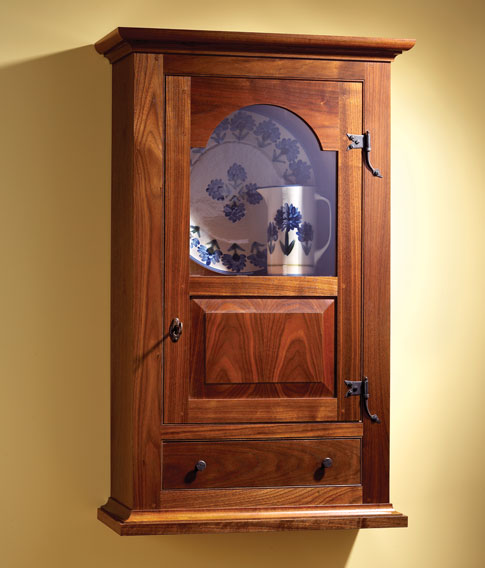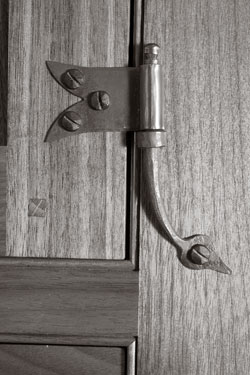
When you design a piece of furniture to build, there are three well-worn paths (some might call them ruts) to follow.
The first path is to design a piece in a wholly original style. This actually happens about once or twice a century, and its rarity is why we don’t have furniture styles such as “Early Bill,” “Middle Chuck” or the “Late Butch Period.” Few people alive can claim they have successfully launched a style, but don’t let that stop you from trying.
The second approach is to build replicas, either spot-on or with mild alterations, such as an additional drawer, or substituting a square ovolo moulding for a bead. This is a good way to learn the vocabulary of different styles, though it is time-consuming to learn everything by the doing. Some woodworkers (even professionals) might build only six pieces in a year.
The third approach is to design a new piece with vintage parts, like rebuilding an old car. With this approach, you expose yourself to hundreds of images of the form. You could look at tables, cabriole legs or Arts & Crafts desks, for example. Then you select your piece’s dominant element from the library – say a leg, a door or a bonnet – and design your piece around that. (However, you can’t easily mix parts from different genres. It might seem like a good idea to put a Honda push rod in a Chevy, until you hit that metric barrier.)
When asked the secret to good design, Steve Hamilton, a builder at Mack S. Headley & Sons (headleyandsons.com), boiled it down to two words: “Picture books,” he said. “Get a bunch. Look them over.”

Design on the Run
Designing a suitable early American wall cupboard for Woodworking Magazine began with a day in our collection of books and images. You don’t need to spend a lot of money to build a book collection, most of the resources you need are at the public library and on the Internet.
My first stop was Wallace Nutting’s “A Furniture Treasury.” This book is available in many different forms, and it’s common to find copies for about $25. The book is as-advertised. It’s hundreds of pages of images of early American stuff that has been organized into categories such as “chests” and “Windsor chairs.”
The second source was auction catalogs from Christie’s (christies.com) and Sotheby’s (sothebys.com) auction houses. The catalogs these houses publish for their Americana auctions are outstanding. Good images. Good overall dimensions. And good history lessons as well. These catalogs can be pricey at $50 or more, but you can usually browse the catalogs on the Internet for free, though sometimes you have to register with the auction house (registration is free).
The third source was an old favorite of mine from my grandparents’ library: “Fine Points of Furniture: Early American” (Crown) by Albert Sack. This common book can be had for about $10 – the new revised edition is much more expensive and rare. Sack’s book compares different kinds of pieces and ranks them as “good,” “better” or “best.” This book helps hone your tastes in mouldings, proportion and turnings.
After a day of reading, I chose a fetching tombstone door from Nutting’s book and found many tall and skinny shapes for wall cupboards that looked like pieces I had seen at Winterthur, the DuPont’s Delaware estate and museum.
My design firmed up when my doctor got too busy for me one Wednesday. After showing up for my appointment, I was told there would be an hour delay. So I sat in my car and sketched about 10 wall cabinets. I didn’t worry about dimensions or joinery, just the overall look and feel of the piece. Each sketch took about five minutes and tried out variations on the door (one or two?), the drawer (one, two or none?) and the width of the stiles and rails (chunky or light?).
After those sketches, I chose the best two designs, sketched them again and showed them around to woodworkers and friends. It sounds like a lot of work, but I have found that good design is like making stir fry: You first chop vegetables and mix sauces for a long time. The active cooking time is real short – if you’ve done your prep work.
— Christopher Schwarz